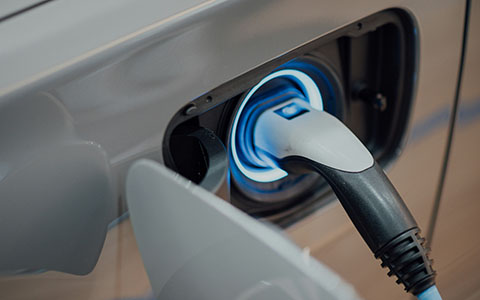The best way to smartly manage our energy is with the S2 standard
The energy transition has finally taken off. Renewable energy deployment is increasing, electric vehicle (EV) sales are booming, and the uptake of electric-powered home devices like heat pumps is growing. This increases our reliance on smart appliances and electricity grids to support the transition away from fossil fuels. However, not all solutions are created equal. Find out why the S2 standard is the best way to ensure the devices we rely on can use energy smartly and flexibly.

Devices must be smart and flexible to serve the energy transition
The availability of renewable energy naturally varies. There is more solar power when the sun is shining on solar panels, and wind turbines require wind. This poses challenges, but an electricity grid and smart devices that can communicate with each other can maximise our use of renewable energy, make the most of available grid capacity, and help avoid congestion.
With applaudable targets increasing the pace of change, such as deploying 60 million heat pumps in the EU by 2030, and phasing out the internal combustion engine by 2035, the EU is already well on the way to decarbonising its energy use. However, there is more to do – and we must do it right. Choosing the right solutions now will pay off later.
Demand for electricity must be synchronised with renewable energy production and available grid capacity. This can be achieved through demand-side flexibility. This is when household electricity consumption is reduced, increased, or postponed in response to external signals that align with user needs – such as the availability of renewable energy and electricity prices. Tariffs that are designed to reward the flexible use of electricity would mean lower bills for consumers because appliances can be set up to consume the most when it costs the least.
The case for demand-side flexibility
Devices we use in our homes have a large potential for demand-side flexibility – particularly those with a significant impact on grid capacity, like solar panels, stationary batteries, EV batteries, and heat pumps. A smooth interplay between these ‘big four’ appliances, as well as other household devices, and the grid can reduce our impact.
However, the potential of demand-side flexibility remains largely untapped. Incentives like dynamic electricity tariffs are still lacking. More devices must also be rolled out that can communicate information to and from a central energy management system that is connected to the grid. Using the same language, devices should be able to communicate their potential to adjust electricity use and when to do that best. It is impossible to unlock demand-side flexibility without this.
Many companies have already developed their own, proprietary solutions, risking vendor lock-in for consumers if devices can only connect to systems from one brand. Without legislation to ensure that manufacturers use the same approach, consumers will be limited to choosing certain brands to use electricity flexibly – and there will be no level playing field.
Why the S2 standard is the best solution
The European Commission recognises that a common approach is needed to unlock demand-side flexibility. However, they have unfortunately backed the wrong horse. Despite having admirable goals, the EU Code of Conduct for smart energy appliances interoperability is insufficient. Firstly, the Code is voluntary, meaning that not all manufacturers will implement it. Its scope is also limited to heat pumps and white goods, overlooking essential appliances such as EV chargers, home batteries, PV inverters, and energy management systems.
A better, and simple, solution to bring about demand-side flexibility is the S2 standard (European standard Customer Energy Management Data Model (S2) EN 50491-12-2). It prioritises the needs of the electricity system in all possible current and future contexts while leaving manufacturers free to decide how they implement the standard. S2 is the only approach on the market today that is truly future-proof, and it should be championed above all other options.
Under the standard, devices can provide demand-side flexibility for their entire lifetimes, even when the smart grid evolves, and energy management approaches change. It is designed to work for any device and with any mechanism to use energy flexibility, without having to upgrade device firmware or software. This allows for innovation and extends the lifetime of smart energy devices. It also ensures that devices can always provide flexibility, regardless of their manufacturer’s willingness to provide upgrades.
We need legislation to ensure all relevant manufacturers implement the same communication standard – and the approach chosen must set us up for the future. For a successful energy transition, the S2 standard should be the first choice of regulators to technically unlock residential demand-side flexibility. No other approaches are up to the task.
A growing alliance of organisations and companies is calling for the S2 standard to be recognised as the best common language for smart appliances.
Read more in our joint position paper.

 By
By  By
By 
